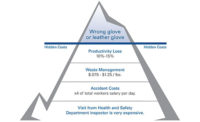What you might do, though, is search OSHA’s web site (www.osha.gov) for its 1989 voluntary guidelines on safety and health management. Four actions cited by OSHA were deemed most important for improving workplace safety. Work site analysis, hazard prevention and control, and safety training were three. Management leadership, the fourth principle, was presented as the most important factor.
Nothing has really changed in 16 years since those guidelines were published in the Federal Register. Having senior management committed and involved in safety is as necessary today as it was then.
Just what is required by senior managers to be effective in their roles as safety leaders?
The following list of 29 questions could start a meaningful dialogue about specific safety knowledge needed by senior managers to lead a company safety system. Answers could create an agenda for an in-depth discussion among your site leaders. And the results of these discussions could put your site on course for positive and permanent change — stepping up to the next level of safety performance.
Do your senior managers:
1 — Inspire employees, by their behavior and words, to the highest safety ideals and promote safety as an organizational value?2 — Require the best and most talented personnel be assigned to solve opportunities for safety improvements?
3 — Provide the time and resources to complete these tasks, or are managers locked into the traditional meetings and committee approach?
4 — Participate in the development of the site safety vision and plan?
5 — Require safety management training for the leadership staff?
6 — Include messages about safety in their communications? Do these messages match with what is actually happening?
7 — Recognize individuals for their contributions for success in improving safety performances, or do they focus on the weaknesses within the safety system?
8 — Maintain a consistent theme about their safety expectations for safety performance?
9 — Ask their direct staff for ideas about how to improve their performance?
10 — Act consistently in their support of safety?
11 — Measure the safety leadership performances of their direct staff by asking questions such as:
- How have you improved safety communications?
- What have you done to promote safety excellence?
- What safety problems have you solved?
- What have you done to help your staff develop its ability to administer our site’s safety systems?
12 — Hold themselves accountable for safety performances? How?
13 — Take responsibility for validating the quality of one or more safety systems per year?
14 — Know at least three key elements of the current site safety plan?
15 — Have a common definition of how to measure safety success?
16 — Know how to calculate a loss-time injury or OSHA recordable rate?
17 — Understand the definition of incurred costs within the workers’ compensation system?
18 — Know the total dollar value of maintenance work completed for repair of avoidable property damages?
19 — Believe that injuries and property damages are the result of failures within the site operating systems?
Do your senior managers believe:
20 — A good injury rate is an absolute reflection of good safety performances?21 — In the value of successful implementation of leading indicators (acts of prevention) as the means to secure low injury rates?
22 — In the myth that safety awards, based on the absence of injuries, cause employees to perform at higher levels of safety performance?
23 — Safety is everybody’s business with equal responsibilities/accountabilities — or that it is the business of designated individuals with specific responsibilities assigned to their positions?
24 — Safety performance objectives should be established for every managerial position, and those objectives accurately reflect the authority and responsibility that goes with the position?
25 — That compliance with legislated safety standards is more important than building a positive safety climate?
26 — That the promotion and support of safety excellence is a key part of their (personal/professional) success?
27 — In the myth that the use of “common sense†by employees replaces the need for a discipline of execution, excellent training processes, the identification of needs, building specific safety plans and holding persons accountable for the execution of the plan objectives?
28 — Safety and health goals should be part of the executive incentive compensation package?
29 — Injuries and property damages are symptoms of failures within the operating systems?
Every talented safety professional will have additional ideas about the curriculum for safety leadership training and education. Please forward your thoughts and comments to Marv Broman (meb@valmont.com).
